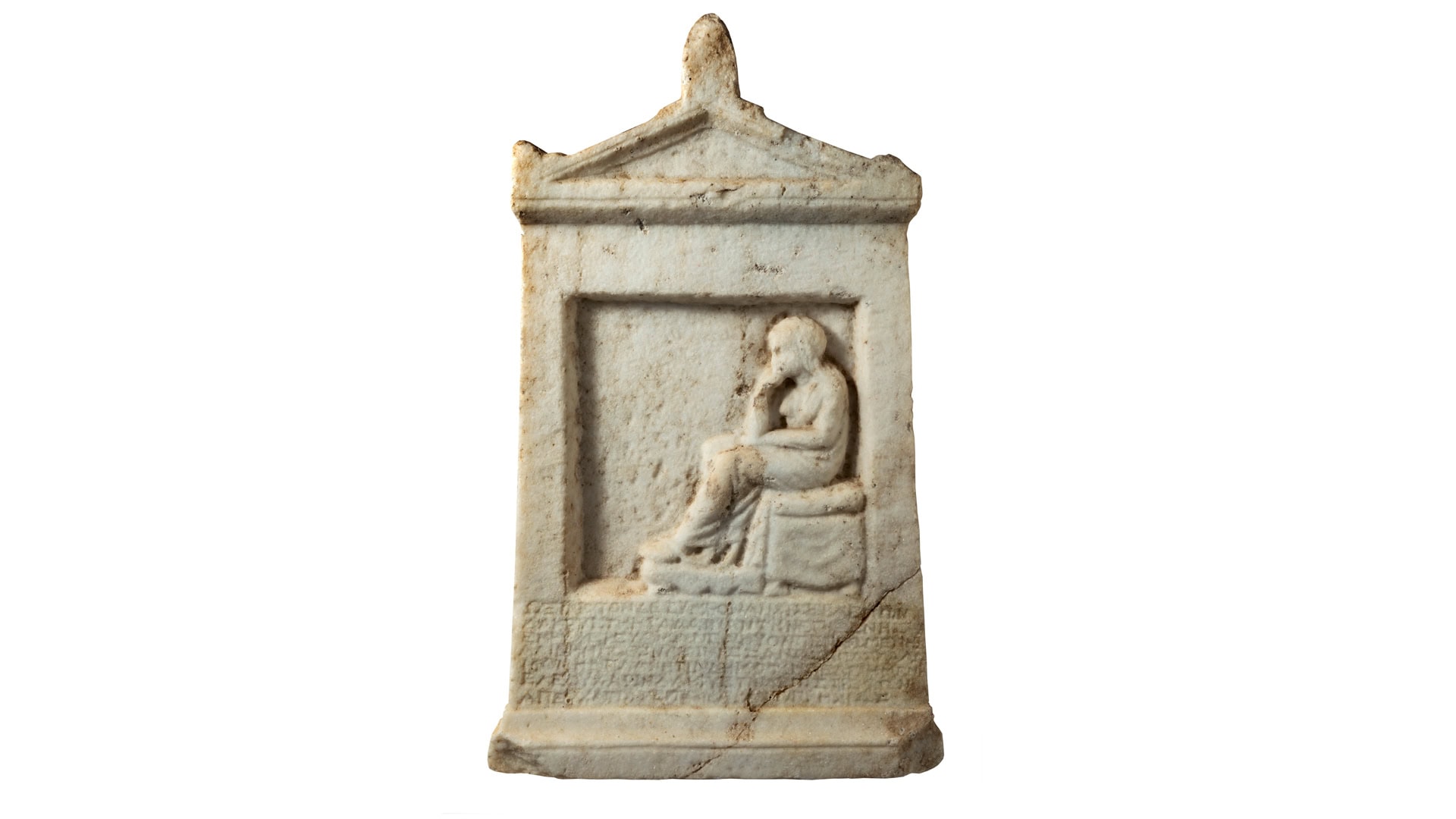Marble inscribed grave stele in relief honouring Aline

The grave stele of Aline constitutes one of the most moving examples of the funerary art of the Cyclades. Made of white marble, it depicts Aline, a young woman, seated on a stool, supporting her head on her bent arm, in a contemplative and emotionally charged posture. The empty space to the left of the figure accentuates the sense of isolation and loneliness conveyed by the image.
The stele decorated and served as a marker of the young woman’s grave during the 2nd century BC. Beneath the relief representation is inscribed the following inscription arranged in seven verses:
At the beginning of the 4th verse, the viewer easily identifies the name of Aline, a foreigner who arrived from Askalon —a city in present-day Palestine— and settled in Delos. She was a woman who died alone, away from her homeland, Phoenicia, while she was pregnant. Her relationship with the man who commissioned the monument and wrote the epigram through which passers-by are invited to stop and weep before the tomb of the poor woman who died away from her family and relatives remains unknown. At the same time, he encourages passers-by to duly acknowledge and thank him for respectfully taking care of her burial in her last resting place in the land of Rheneia.
The monument expresses in an emotional manner the brutality of a pregnant woman’s death in a foreign land, a woman who fell victim to her own destiny.